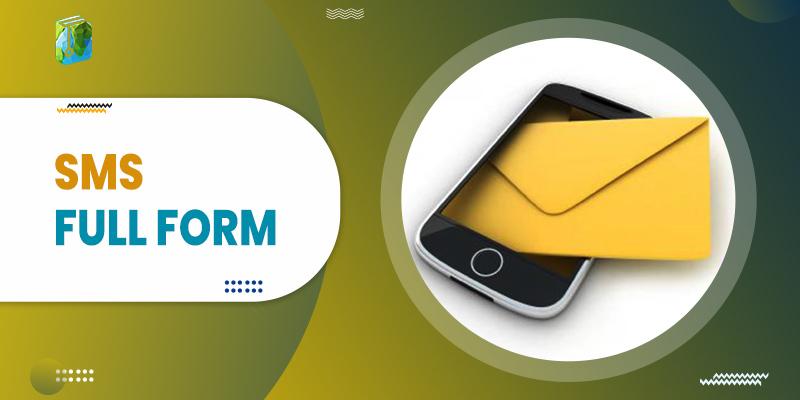The full form of SMS is Short Message Service.
Introduction
SMS is a standardized communication protocol that allows communicating by exchanging text messages between cell phones or from a PC or handheld device to a cell phone. The maximum size of the text messages is 160 characters or 224 characters, depending upon the service mode (5-bit mode and 7- bit mode, respectively) used.
SMS can be sent from a computer via an SMS gateway. These are Websites that enable an individual to send messages to people within the network served by that gateway.
In this article, we will discuss the full form of SMS, the concept behind SMS, the working process of SMS, the advantages and disadvantages of SMS, and alternatives of SMS.
Concept of SMS
The SMS concept was generated in the 1980s when it was used in radio memo pagers (a wireless telecommunication device used to receive or reply to alphanumeric or voice messages). The concept was adopted by the Global System of Mobile Communication in 1985. However, it was in the UK, where the first SMS was sent in the year 1992.
How SMS works?
The Control Channel
A phone constantly exchanges information in the form of a packet of data with its network tower over a pathway known as the Control channel, which is used for both call setup and SMS messages. When an SMS is typed and sent, it travels to the SMS center via the tower.
The message format consists of the content of the message, a timestamp, the recipient’s phone number, etc.
The Short Message Service Center
The Short Message Service Center (SMSC) is a part of a wireless telecommunication service that stores, forwards, and receives SMS messages. When a text message travels through the control channel, it arrives at the SMSC from where it is sent immediately if the recipient’s cell phone is active and enabled to receive text messages. On the other hand, if the recipient’s cell phone is inactive or unable to receive text messages, then the SMSC stores the message until it can be sent.
Advantages of SMS
- It acts as a discreet form of conversation, taking less time than making a call or sending an e-mail.
- The message gets stored in the SIM card, making it easy to retrieve it when necessary until it is deleted.
- SMS can be used to send messages to many recipients simultaneously through broadcasting used by companies to contact employees or transmit news or other information to its subscribers.
- SMS marketing acts as a tool for a promotional campaign and is widely used by companies to remain in contact with their existing customer or to attract new customers.
Disadvantages of SMS
- There is a character limitation of only 160 characters per text message.
- To send a text message the user has to pay the cost for sending it i.e. SMS facility is not free.
- SMS once sent cannot be undone.
Alternatives of SMS
To exchange elaborate messages, EMS or MMS or messaging applications are used. Formatted text, sound effects, small pictures, icons, animations, audio and video files in addition to text can be exchanged using these services.
Conclusion
So this was all about the full form of SMS, the concept behind SMS, how SMS service functions, the advantages and disadvantages of SMS, and the alternatives of SMS. Still, if you have any doubts or queries, write to us through the comments section, we would try to address them at the earliest.

